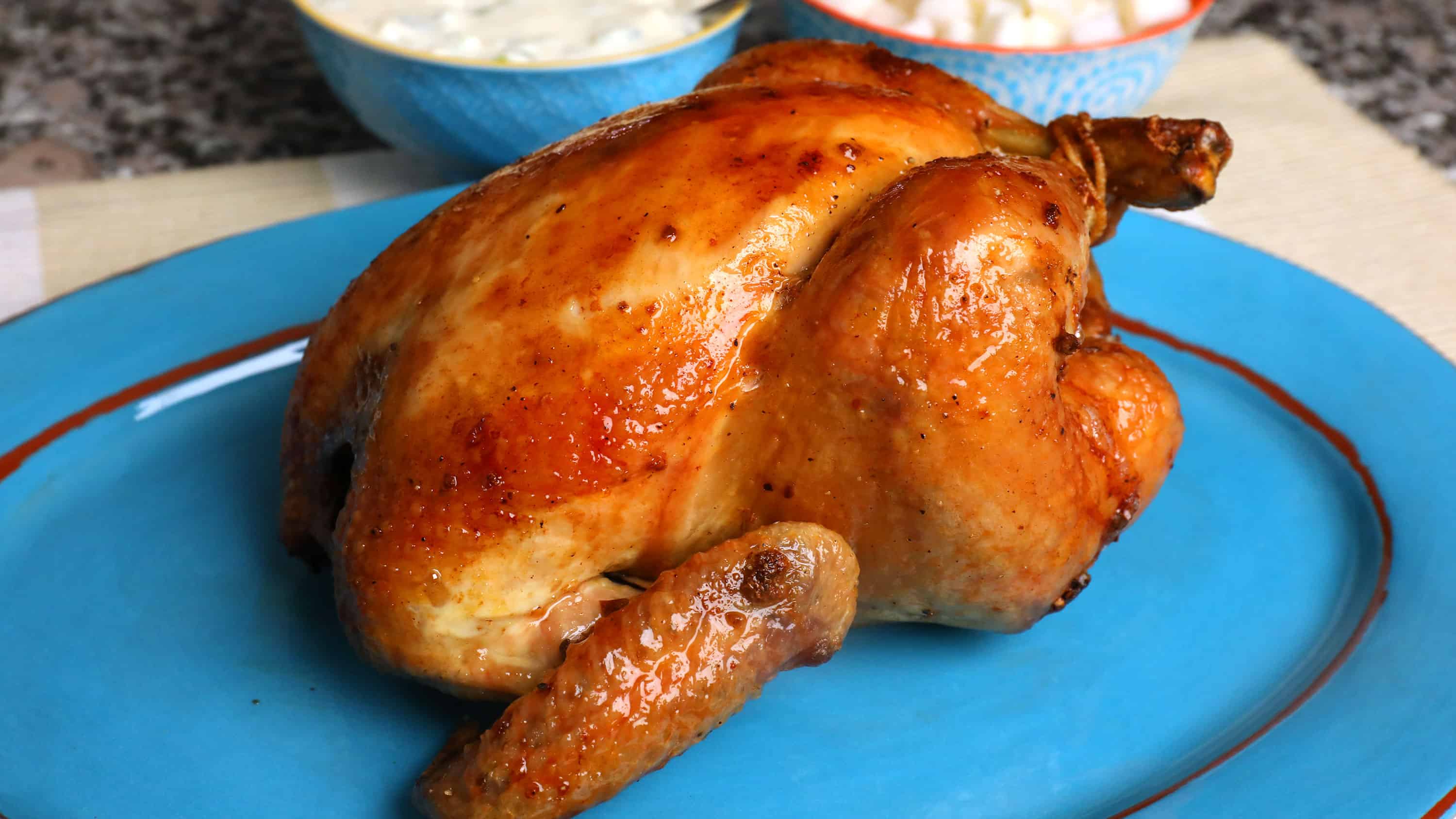It can be scary to cook chicken breast because it dries out quickly if it’s cooked too long. But learning how to bake chicken breast at 375 degrees F is the best way to make sure it’s cooked all the way through while still keeping its juicy, tender texture.
In this comprehensive guide, we’ll share expert tips on achieving perfectly cooked chicken breast when baking at 375 degrees. Whether you’re a novice cook or a seasoned chef, read on to learn the secrets behind succulent, flavorful chicken breast every time.
Factors that Affect Chicken Breast Cooking Time
When baking chicken breast at 375 degrees the cooking time can vary based on
-
Thickness – Thicker cuts take longer to cook than thinner ones. Allow 20-25 minutes for 1-inch thick boneless breasts.
-
Bone-in or boneless? Chicken breasts with bones take longer to cook, about 35 to 40 minutes. The bones help retain moisture.
-
Shape and Size: Shapes that aren’t round may need a little more time to cook. Larger breasts need more time.
-
Oven Variations – Differences in oven temperatures means checking doneness with a thermometer is important.
Step-by-Step Guide for Baking Juicy Chicken Breasts
Follow these simple steps for foolproof baked chicken breast:
-
Prep – Pat chicken dry and trim excess fat. Season generously with salt, pepper, herbs or spices.
-
Preheat Oven – Heat oven to 375°F. Use a digital thermometer for accuracy.
-
Put the chicken on a baking sheet or in a dish and bake it. Baste with olive oil or marinade. Bake for 25-30 minutes until 165°F.
-
Rest – Let chicken rest 5-10 minutes before slicing to retain juices.
-
Serve – Slice against the grain for tenderness. Pair with flavorful sides like roasted veggies.
Handy Tips for Moist, Flavorful Results
Implement these tips for even better baked chicken breast:
-
Brine – Soak chicken in a saltwater brine before baking to boost moisture and flavor.
-
Marinate – Let chicken marinate 30+ minutes to allow flavors to penetrate. Try lemon-herb or spicy rubs.
-
Brown Sugar – Coat chicken in brown sugar before baking for delicious caramelization.
-
Foil Tent – Cover chicken loosely with foil at first, then uncover to brown. Traps in moisture.
-
Meat Thermometer – Use an instant-read thermometer to check doneness and prevent overcooking.
-
Let Rest – Never cut chicken right after baking. Resting allows juices to redistribute.
-
Slice Properly – Slice chicken against the grain for a tender texture.
Common Baking Issues and How to Avoid Them
Having trouble getting perfect results? Here are some common baking mistakes and fixes:
-
Dry chicken – Use a thermometer and don’t overcook. Brining helps retain moisture.
-
Undercooked chicken – Double check internal temp reaches 165°F. Return to oven if needed.
-
Tough, chewy meat – Overcooking can cause this. Brine chicken first and don’t cook too long.
-
No browning – Uncover chicken for the last 10-15 minutes for browning and crispy skin.
-
Sticks to pan – Line pan with parchment paper or lightly oil before baking.
Pairing Chicken Breast with Delicious Side Dishes
Here are some tasty sides that pair wonderfully with juicy baked chicken breast:
-
Roasted potatoes, carrots or Brussels sprouts
-
Steamed broccoli, asparagus or green beans
-
Fresh green salad with vinaigrette
-
Quinoa or brown rice
-
Sauteed spinach with garlic
-
Creamy mashed cauliflower
-
Squash medley – zucchini, yellow squash, etc.
Storing and Reheating Leftovers
-
Store cooked chicken breast in an airtight container in the fridge for 3-4 days.
-
Freeze chicken in an airtight bag or container for 2-6 months.
-
Reheat chicken in the oven at 250°F to retain moisture and prevent drying out.
-
You can also reheat in the microwave or skillet, adding a bit of broth or sauce to keep it tender.
-
Always reheat chicken to 165°F internal temperature.
Frequently Asked Questions
How long should I bake boneless, skinless chicken breasts at 375°F?
- Bake 1-inch thick boneless, skinless breasts for 20-25 minutes at 375°F. Check the internal temperature to ensure they reach 165°F.
Can I use an instant-read thermometer to check for doneness?
- Yes, inserting an instant-read thermometer into the thickest part of the breast is the best way to guarantee they are fully cooked to a safe 165°F.
Should I brine or marinate chicken breasts before baking?
- While not mandatory, brining or marinating can impart extra moisture, flavor and tenderness. Let chicken marinate 30+ minutes before baking.
What if my chicken breasts come out dry and chewy?
- Dryness is usually from overcooking. Next time, carefully monitor temperature and remove from oven at 160°F since carryover cooking will finish them.
What are some flavorful rubs or seasoning blends I can try?
- Get creative with spices and herbs! Try lemon pepper, tandoori masala, jerk seasoning, Italian herb blend, Southwest rub with chili powder and cumin, and more.
The Secret to Juicy Baked Chicken Breast
The key to perfect baked chicken breast lies in monitoring temperature closely to prevent overcooking. Let an instant-read thermometer be your guide, not the clock. Remove chicken from the oven before it hits 165°F since the temperature will continue rising as it rests.
Additionally, small tweaks like brining, marinating, and resting before slicing can work wonders for moisture and texture. With practice using these expert tips, you’ll be able to achieve restaurant-quality baked chicken breast at home every time. Say goodbye to dry chicken woes for good!

The Panel of Chicken Chicken-Baking Experts
- Sheela Prakash is a writer who also edits recipes for Simply Recipes and wrote the book Salad Seasons.
- Jason Goldstein writes cookbooks, creates recipes, blogs about food, and makes content for @Chophappy.
- Micah Siva is a trained chef, a registered dietitian, a contributor to Simply Recipes, and the author of Nosh.
- She is the owner and chef at Chang Thai Cafe and The Catch in Littleton, New Hampshire.
